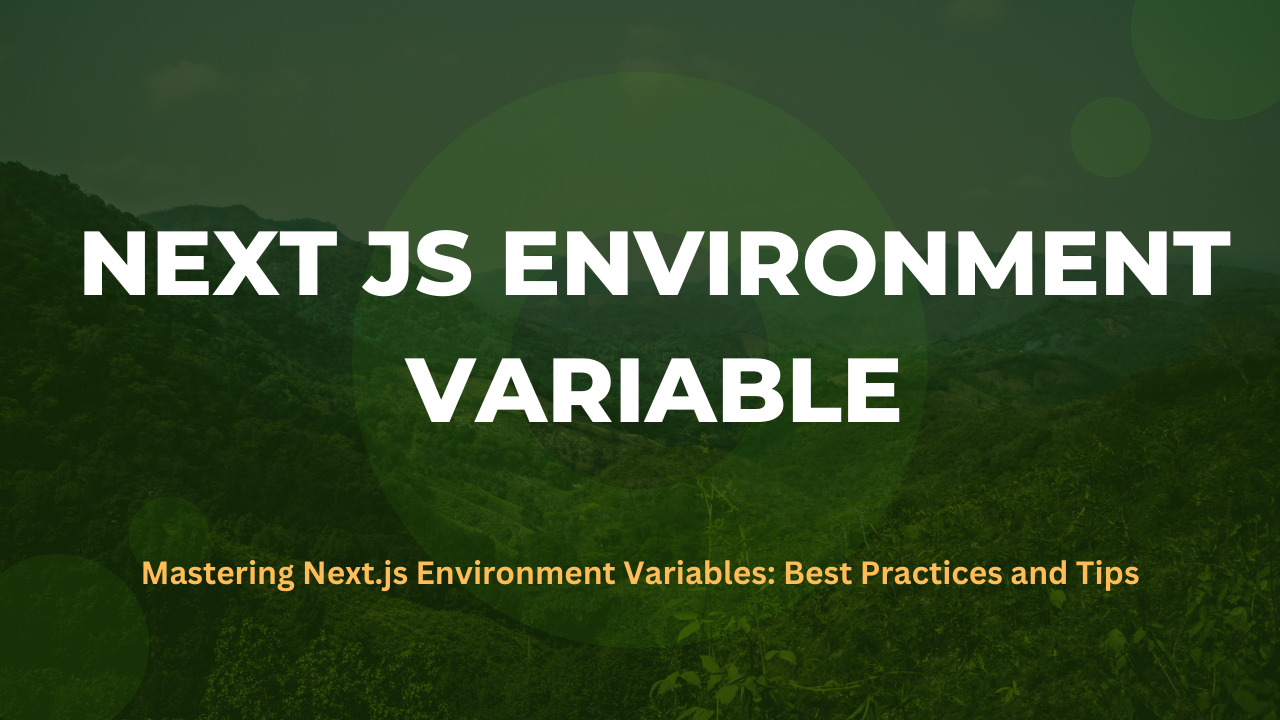Introduction
In modern web development, building applications with efficient configuration management is crucial. Next.js, a popular React framework, offers a powerful feature called environment variables to simplify the process.
In this blog post, we’ll explore Next js environment variables and how they can enhance the development experience by allowing dynamic configuration without exposing sensitive information
Understanding Environment Variables
Environment variables are values that can be accessed by applications during runtime, providing a flexible way to configure various aspects of an application without hardcoding values directly into the codebase. They allow developers to separate configuration from the application logic, making it easier to switch between different environments (e.g., development, staging, production) and handle sensitive data securely.
Why Use Next.js Environment Variables?
Next.js environment variables enable developers to define configuration values that can be accessed from anywhere within a Next.js application. This approach offers several advantages:
- Improved Security: Sensitive information, such as API keys, database credentials, or third-party service tokens, can be stored securely as environment variables. They are not exposed in the source code, reducing the risk of accidental exposure or security breaches.
- Configuration Flexibility: Next.js environment variables allow developers to change configuration values without modifying the code. This flexibility is especially useful when deploying applications to different environments or when collaborating with multiple team members who require different setups.
- Simplified Deployment: By utilizing environment variables, you can deploy the same codebase to multiple environments without the need for separate deployment configurations. This streamlines the deployment process and reduces potential errors caused by manual configuration changes.
Setting Up Next js Environment Variables
Let’s walk through the steps to set up and use environment variables in a Next.js application:
- Create a
.envFile: In the root directory of your Next.js project, create a new file named.env. This file will store your environment-specific configuration values. It’s essential to add this file to your.gitignoreto prevent sensitive information from being committed to version control. - Define Variables: Inside the
.envfile, define your environment variables using the formatKEY=VALUE. For example:
.env
WEATHER_API_KEY=your_api_key WEATHER_API_URL=https://api.weather.com
You can add as many variables as needed, depending on your application’s requirements.
Access Environment Variables
Next js automatically loads the .env file and exposes the defined variables through the process.env object. You can access these variables in your code using process.env.VARIABLE_NAME.
Example Usage:
HomePage.jsx
import { useEffect, useState } from 'react';
function HomePage() {
const [weather, setWeather] = useState(null);
useEffect(() => {
// Fetch weather data using the environment variables
fetch(`${process.env.WEATHER_API_URL}/current?apiKey=${process.env.WEATHER_API_KEY}`)
.then(response => response.json())
.then(data => setWeather(data))
.catch(error => console.error(error));
}, []);
return (
<div>
<h1>Current Weather</h1>
{weather ? (
<>
<p>Temperature: {weather.temperature}</p>
<p>Condition: {weather.condition}</p>
</>
) : (
<p>Loading...</p>
)}
</div>
);
}
export default HomePage;
Note: After defining environment variables, you need to restart your Next.js development server for the changes to take effect.
Pro Tip:
Always use environment variables in Next.js for sensitive data, like API keys. It keeps your secrets secure and allows easy configuration management for different environments.
Remember to store your environment variables securely on your hosting provider, and avoid hardcoding them in the code or exposing them in version control systems.
Conclusion
Next.js environment variables offer a powerful way to manage configuration and enhance the security of your applications. By understanding best practices and implementing tips shared in this blog post, you’ll be able to master the usage of Next.js environment variables, ensuring your applications are flexible, secure, and efficiently configured.
